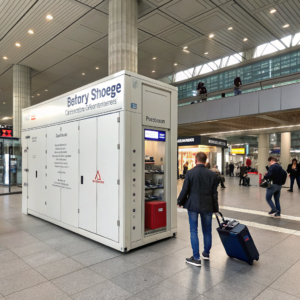What to look for in a solar panel quote?
•
Getting a solar panel quote can feel overwhelming. You want to make sure you're getting the best system for your needs without overpaying.
A good solar quote should clearly list panel brands, system size, estimated production, warranty terms, financing options, and total costs before incentives. Compare at least 3 quotes to spot inconsistencies and ensure you're getting fair pricing for quality equipment.
The right solar quote makes all the difference between a smart investment and an expensive mistake. Let's break down what really matters in your solar proposal.
How to compare solar estimates?
Solar companies often present information differently, making comparisons challenging. What key elements should you focus on when evaluating multiple quotes?
Compare solar estimates by checking panel efficiency ratings (18-22% is standard), inverter type (microinverters vs string), warranty coverage (25 years for panels, 10+ for inverters), and cost per watt ($2.50-$3.50 is typical before incentives).
!
When reviewing multiple solar proposals, pay attention to these critical components:
Equipment Specifications
- Panel Type: Monocrystalline (most efficient) vs Polycrystalline
- Inverter Technology: String inverters (cheaper) vs Microinverters (better for shading)
- Mounting System: Quality of racks and flashings
Performance Metrics
Metric Good Range Why It Matters Efficiency 18-22% Higher efficiency means more power per square foot Degradation Rate ≤0.5%/year Slower degradation maintains output longer Temperature Coefficient -0.3% to -0.5%/°C How well panels perform in heat Financial Breakdown
- Cash price vs financed amount
- Federal/state incentives included
- Estimated first-year production (kWh)
- Payback period calculation
How much should you pay for solar panels?
Solar pricing varies widely based on system size, equipment quality, and installation complexity. What's a fair price range in today's market?
For a 6kW system, expect to pay $15,000-$21,000 before incentives ($2.50-$3.50 per watt). After the 30% federal tax credit, net cost drops to $10,500-$14,700. Prices vary by location, roof type, and equipment choices.
Several factors influence your final solar panel costs:Price Drivers
- System Size: Larger systems cost more but have lower $/watt
- Panel Quality: Premium brands (SunPower, LG) cost 10-20% more
- Roof Factors:
- Steep pitch or multiple levels increase labor
- Tile roofs cost more than shingle installations
- Local Market: Labor costs vary by region
Typical Price Ranges
System Size Gross Cost After 30% Tax Credit 4 kW $10,000-$14,000 $7,000-$9,800 6 kW $15,000-$21,000 $10,500-$14,700 8 kW $20,000-$28,000 $14,000-$19,600 How to read a solar quote?
Solar proposals contain technical and financial details that can confuse homeowners. What sections deserve your closest attention?
Focus on the equipment list, production estimates, warranty terms, payment options, and fine print about system removal/replacement costs. Verify the installer's license, insurance, and whether they use subcontractors.
A thorough solar quote review should cover these essential elements:
Key Sections to Analyze
- System Design
- Number and model of panels
- Inverter type and quantity
- Roof diagram with panel placement
- Financial Terms
- Total cost before/after incentives
- Financing APR and terms if applicable
- Payment schedule (deposit, progress, final)
- Contract Details
- Installation timeline
- Permitting responsibility
- Cancellation policy
Red Flags to Watch For
- Vague equipment descriptions ("premium panels")
- Overly optimistic production estimates
- Pressure to sign quickly
- Requests for large upfront payments
Conclusion
A quality solar quote provides transparent pricing, reputable equipment specs, realistic production estimates, and strong warranty coverage. Always compare multiple bids and ask questions before committing. The right solar investment should meet your energy needs at a fair price.






